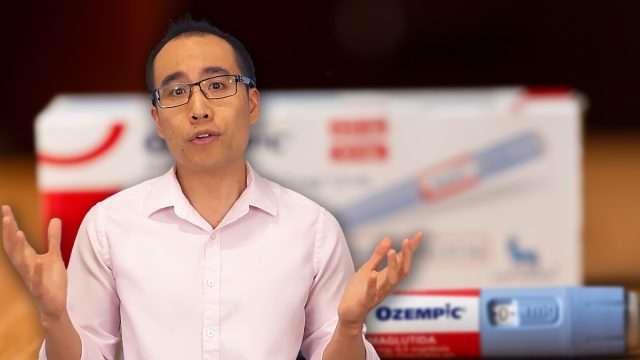Expert Reveals 5 Hidden Ozempic and Wegovy Mistakes to Avoid Now

Starting Ozempic or Wegovy can feel overwhelming, and many patients make critical mistakes that could affect their results. "These medications work differently from traditional treatments, and understanding how to use them correctly is crucial," explains Dr. Brian Yeung, ND, who specialize in metabolic health. With the rising popularity of GLP-1 medications for managing diabetes and weight loss, avoiding common pitfalls becomes even more important. Here are the five key mistakes to watch out for, along with expert guidance on how to prevent them.
Skipping or Inconsistent Dosing
"Consistency is crucial with GLP-1 medications," says Dr. Yeung in his video. According to Cleveland Clinic, each medication has a specific dosing schedule – some require weekly injections while others are daily. Missing doses can interrupt your progress and reduce the medication's effectiveness. Set reminders and establish a routine to stay on track.
RELATED: 20 Things You Need to Know About Ozempic and Weight Loss
Ignoring Diet and Hydration
 Shutterstock
Shutterstock
"Many patients don't realize these medications slow down digestion, which means you need to adjust your eating habits," Dr. Yeung points out. Cleveland Clinic confirms that GLP-1 agonists work by slowing stomach emptying and increasing feelings of fullness. Stay hydrated and focus on nutrient-rich foods to prevent potential deficiencies.
Not Monitoring Blood Sugar Properly
 Shutterstock
Shutterstock
"While these medications have a lower risk of causing hypoglycemia, regular monitoring is still essential," says Dr. Yeung. Cleveland Clinic experts warn that the risk increases when combining GLP-1s with other diabetes medications. Keep track of your blood sugar levels and know the signs of low blood sugar, which include shaking, sweating, and dizziness.
Dismissing Side Effects
 Shutterstock
Shutterstock
"Some initial digestive issues are common, but they shouldn't be severe or ongoing," Dr. Yeung advises. According to Cleveland Clinic, common side effects include nausea, vomiting, and diarrhea, particularly when starting the medication or increasing the dose. Don't ignore persistent or severe symptoms – contact your healthcare provider if side effects become concerning.
RELATED: 20 Possible Ozempic Side Effects
Relying Solely on Medication
 Shutterstock
Shutterstock
"The biggest mistake is thinking these medications work in isolation," Dr. Yeung emphasizes. Cleveland Clinic stresses that GLP-1 agonists are just one part of a comprehensive treatment plan. Successful management requires combining medication with lifestyle changes, proper diet, and regular exercise.
Understanding Your Medication
 Shutterstock
Shutterstock
Cleveland Clinic notes that GLP-1 medications work by mimicking a natural hormone that helps control blood sugar and appetite. Understanding this mechanism can help you use the medication more effectively and set realistic expectations for your treatment journey.
Tracking Progress Effectively
 Shutterstock
Shutterstock
Monitor more than just weight loss. Cleveland Clinic reports that GLP-1 medications can offer additional benefits, including improved blood pressure and better lipid profiles. Keep track of these various health markers to get a complete picture of your progress.
RELATED: What Happens to Your Body When You Stop Taking Ozempic
When to Contact Your Doctor
 Shutterstock
Shutterstock
Cleveland Clinic recommends maintaining regular check-ups and promptly reporting any persistent side effects or concerns about the medication's effectiveness. Don't wait until small issues become major problems. And if you enjoyed this article, don't miss 20 Incredible Ozempic Success Stories of All Time.




